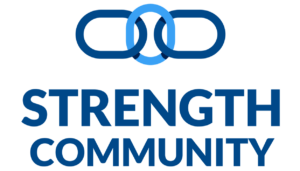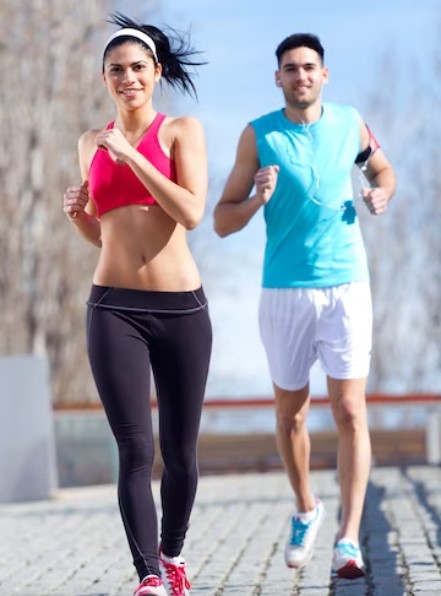Gallbladder plays a crucial role in health and disease.
Diet and exercise are perhaps the most important elements that help improve gallbladder function.
Here is how exercise and diet influence gallbladder function.
Role of Exercise
1. Effects on Gallstones:
Research suggests a direct link between regular exercise and gallbladder health. Gallbladder stones form when the bile fails to flow freely from the gallbladder into the gut.
Exercise stimulates the release of a gut hormone called cholecystokinin (CCK). CCK has a prokinetic effect. It stimulates bile flow from the gallbladder into the gut. This keeps the bile flowing and prevents its stasis (1).
In one study, researchers compared the incidence of gallbladder stones among male and female runners.
Results showed that exercise fitness (measured by running speed) and distance ran were two independent factors that reduce the risk of gallbladder stones.
Males who ran faster than 4.75 m/s had an 83% lower risk of gallstone.
Females who ran 4 m/s had a 93% lower risk of gallstones.
Also, males and females running more than 8 km/day had the lowest risk of developing gallstones (2).
This denotes the importance of the intensity of the sport for gallbladder health.
Another study gave some quantitive figures on the gallbladder emptying achieved with exercise.
Results suggested that the gallbladder ejection fraction (amount of bile the gallbladder ejects with each contraction) improved from 5.5% to 29.2% 150 minutes after exercise (3).
In simple words, exercise causes a considerable improvement in gallbladder motility and promotes emptying.
Lack of exercise promotes cholesterol uptake by the liver and insulin resistance. These mechanisms cause an imbalance in the composition of the bile. This increases the risk of cholesterol gallstones.
Exercise promotes insulin sensitivity, reduces liver cholesterol uptake, and improves cholesterol metabolism. This causes lower cholesterol levels in the bile and reduced risk of gallstones (4).
In addition to reducing the risk of gallstones, regular exercise improves the quality of life in individuals who have established gallstones. Exercise exerts anti-inflammatory effects, increases pain threshold, and reduces the risk of bile stasis (4).
2. Effects on Bile Composition
Bile contains several components, like bile acids and salts. Bile acids undergo several phases of metabolism during their course through the liver, gallbladder, and gut. Bile acids consist of cholesterol.
Research suggests that higher cholesterol, a direct consequence of a sedentary lifestyle, can increase bile acid levels.
Higher levels of bile acid can damage the cellular DNA and increase the risk of colorectal cancer. Workout promotes a better bile composition, reduces cholesterol levels in bile, and diminishes the risk of colorectal cancer (5).
Role of Nutrition
1. Nutrition and Gallstones:
One research identified two distinctive dietary patterns linked to One pattern was the healthy dietary pattern that included a high intake of vegetables, fruits, and nuts.
This pattern was associated with a significantly reduced risk of gallstones. The other group was at an increased risk of gallstones and comprised individuals who consumed high amounts of processed meats, high-fat dairy, fried foods, soft drinks, sugar, and processed food items (6).
2. Nutrition and Bile Production and Flow:
A protein-deficient diet induces bile stasis and reduces gallbladder motility.
On the other hand, eating a high-protein diet, especially rich in amino acids like taurine and glycine, increases bile flow and gallbladder motility.
Bile flow through the gallbladder also improves with polyunsaturated fatty acids, especially from fish sources (7).
3. Nutrition, Bile Metabolism, and Cancer Risk:
There is a complicated relationship between dietary intake, bile metabolism, and cancer risk.
The gut microbiota plays a pivotal role in the metabolism of bile acids.
The liver turns cholesterol into primary bile acids. To help the bile acids flow easily, the liver joins them with amino acids like taurine and glycine.
The process is called conjugation. Once these bile acids reach the gut, the gut microbiota turns them into secondary bile acids. Most of these bile acids get reabsorbed and return to the liver, where they are reused – a system called enterohepatic circulation.
If the secondary bile acids are in excessive amounts, some of the secondary bile acids escape the enterohepatic circulation and remain in the gut. Inside the gut, these bile acids promote oxidative stress, DNA damage, and inflammation.
These changes can promote the development of cancers like colorectal cancer.
Research suggests that a fiber-rich diet reduces the levels of secondary bile acids inside the gut.
This reduces the risk of colorectal cancer. Although amino acids like glycine and taurine are crucial for bile synthesis, their excessive consumption increases the levels of secondary bile acids and can increase cancer risk (8, 9). It’s a matter of balance.
4. Bile function and HCl levels:
Having proper levels of HCl is paramount for adequate bile and gallbladder function. There is a significant interplay between secretions from the different parts of the gastrointestinal tract. Bile secretion can be compromised if the stomach pH is not low enough. On the other hand, the secretin hormone is released as a response to a low pH of food/secretions in the small intense (something that shouldn’t happen). Secretin controls the release of bile as bile has an alkaline pH.
Tests to Assess Gallbladder Function
How do you know your gallbladder is functioning correctly?
One thing is to look for any signs or symptoms of gallbladder issues. These can include:
- Pain in the upper right side of your abdomen, which radiates to your shoulder and worsens with eating large and fatty meals.
- Nausea and vomiting.
- Yellowing of your urine, stool, and eyes (jaundice).
- Fever, chills, and generally unwell suggesting an acute infection.
Besides the physical signs, several tests can help determine if you have a gallbladder problem. These can include:
- Blood tests include a full blood count, C-reactive protein, and liver function tests. These tests check for abnormalities like jaundice or acute infection of the gall bladder (cholecystitis)
- Ultrasound is the gold standard test for assessing structural issues like gallstones.
- CT and MRI are more detailed tests that check for any structural issues with the gallbladder, like infection, cancers, obstructions, etc.
- HIDA scan involves injecting a dye into the vein. The dye flows through the gallbladder and gets excreted into the intestine. A series of X-rays check for any blockage along the path. It can also assess the time it takes for the bile to flow from the gallbladder into the intestine, giving information on gallbladder motility.
Conclusion
As you can see, bile and the gallbladder have essential functions in our digestive system and overall health.
Exercise, a healthy diet, and proper HCl levels positively affect gallbladder health. Also, the right amount of proteins and amino acids like glycine and taurine are crucial for bile synthesis.
Because of its impact on overall health, it’s also recommended to test for gallbladder function periodically.
References:
- Molina-Molina E, Lunardi Baccetto R, Wang DQ, de Bari O, Krawczyk M, Portincasa P. Exercising the hepatobiliary-gut axis. The impact of physical activity performance. Eur J Clin Invest. 2018 Aug;48(8):e12958. doi: 10.1111/eci.12958
- Williams PT. Independent effects of cardiorespiratory fitness, vigorous physical activity, and body mass index on clinical gallbladder disease risk. Am J Gastroenterol. 2008 Sep;103(9):2239-47. doi: 10.1111/j.1572-0241.2008.01944.x.
- Sari R, Balci N, Balci MK. Effects of exercise on gallbladder volume and motility in obese women. J Clin Ultrasound. 2005 Jun;33(5):218-22. doi: 10.1002/jcu.20117.
- Shanmugam H, Molina Molina E, Di Palo DM, Faienza MF, Di Ciaula A, Garruti G, Wang DQH, Portincasa P. Physical Activity Modulating Lipid Metabolism in Gallbladder Diseases. J Gastrointestin Liver Dis. 2020 Mar 13;29(1):99-110. doi: 10.15403/jgld-544
- Wertheim BC, Martínez ME, Ashbeck EL, Roe DJ, Jacobs ET, Alberts DS, Thompson PA. Physical activity as a determinant of fecal bile acid levels. Cancer Epidemiol Biomarkers Prev. 2009 May;18(5):1591-8. doi: 10.1158/1055-9965.EPI-08-1187.
- Jessri M, Rashidkhani B. Dietary patterns and risk of gallbladder disease: a hospital-based case-control study in adult women. J Health Popul Nutr. 2015 Mar;33(1):39-49.
- B. Tuchweber et al. Nutrition and bile formation. Nutrition Research Volume 16, Issue 6, June 1996, Pages 1041-1080
- Wolf PG, Byrd DA, Cares K, Dai H, Odoms-Young A, Gaskins HR, Ridlon JM, Tussing-Humphreys L. Bile Acids, Gut Microbes, and the Neighborhood Food Environment-a Potential Driver of Colorectal Cancer Health Disparities. mSystems. 2022 Feb 22;7(1):e0117421
- Trefflich I, Marschall HU, Giuseppe RD, Ståhlman M, Michalsen A, Lampen A, Abraham K, Weikert C. Associations between Dietary Patterns and Bile Acids-Results from a Cross-Sectional Study in Vegans and Omnivores. Nutrients. 2019 Dec 23;12(1):47.


